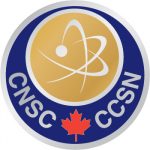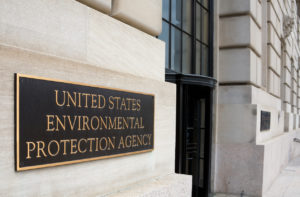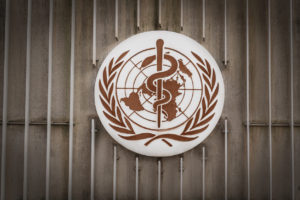Le langage clair et simple soutient une communication claire et inspire confiance

Communicating technical information to a non-technical audience without compromising intent or accuracy can be challenging. Using plain language can help you make your message easier to understand, so it’s no surprise that many radiation protection organizations support the use of plain language.
When I started writing this article, I wanted to tell you about a new plain language toolkit developed by Evidence for Democracy (E4D). As I started writing, I couldn’t help wondering who in the radiation protection community was already using plain language. It turns out there’s a lot of support for plain language communication in your communities.
So I’m still going to tell you about the E4D toolkit, but then I’m going to share with you some of the reasons plain language is encouraged in radiation protection.
 Who is Evidence for Democracy?
Who is Evidence for Democracy?
E4D is a non-partisan Canadian non-profit organization that advocates for evidence-based policy making in government.
E4D believes science communication needs to be easy to understand for it to be useful to the public and other stakeholders. They also recognize that scientific research can be very complex and technical. It’s not always easy for scientists to translate their work so it can be easily understood by the general public.
To help technical experts write easy-to-understand summaries of their research, E4D developed a set of tools and best practices to guide public science communication. Preparing Plain Language Summaries: A Toolkit by Evidence for Democracy can be found in the training section of the E4D website. The toolkit is intended to help scientists write plain language summaries, but the advice is applicable to other kinds of plain language writing as well.
 What is plain language?
What is plain language?
According to the International Plain Language Federation, “a communication is in plain language if its wording, structure, and design are so clear that the intended readers can easily find what they need, understand what they find, and use that information.”
Plain language is clear and direct. It uses common, everyday words in short sentence and short paragraphs. It is designed to help your reader focus on the message without being distracted by complicated language. In the E4D toolkit, author Farah Qaiser reminds scientists that “the words that are common to you, an expert in your field, may not be common to your audience” (p. 19).
According to Qaiser, “what makes writing in plain language different is the focus on the reader” (p. 5). That is the first rule of plain language: write for your audience. When you write with your reader’s needs in mind, they will be more receptive to your message.[1]
Support for plain language in radiation protection
 Canadian Nuclear Safety Commission (CNSC)
Canadian Nuclear Safety Commission (CNSC)
CNSC, in REGDOC-3.4.1: Guide for Applicants and Intervenors Writing CNSC Commission Member Documents, recommends using plain language (3.1.3 Use plain language):
Effective communication relies on plain language. Communicating in plain language means being clear and concise, using short sentences, keeping to the facts and writing in a way that is easy to read and understand.
While the Commission depends on [Commission Member Documents] that are technically and legally sound, it is important to convey information in language that is as plain as possible.
They go on to provide suggestions to “help convert complex messages and legal and technical jargon into plain language that is understandable to a wide audience, without compromising the content’s intent or accuracy.”
 US Nuclear Regulatory Commission (NRC)
US Nuclear Regulatory Commission (NRC)
NRC also advocates for the use of plain language to support their “important mission,” which is to “regulate, license, and oversee the nation’s civilian use of nuclear materials to protect both people and the environment.”
Because this mission is so important, we want you to be informed about—and have a reasonable opportunity to participate meaningfully in—our activities. We see plain writing as a key to achieving that goal. After all, how can you become informed and involved if you don’t understand what we say and write? More importantly, why should you trust us to achieve our mission if we can’t clearly communicate important concepts? (Plain Writing and Its Benefits)
NRC acknowledges that, if they fail to effectively communicate their decisions, which ultimately affect the health and safety of people and the environment, they risk compromising their mission and public confidence in them.
Although no one knows the true cost of poor communication, the available information suggests it’s high. It isn’t easy to explain complex technical concepts in plain language, but it pays off in positive results like increased public confidence, licensee compliance, and enhanced safety and security.
Visit NRC’s website to learn more about their plain writing philosophy, techniques, and guidance.
 International Commission on Radiological Protection (ICRP)
International Commission on Radiological Protection (ICRP)
In her 2015 presentation “The Future of ICRP—Towards a Centenary and Beyond,” given at the ICRP symposium in Seoul, South Korea, chairperson Claire Cousins included “produce [a] plain language overview of the system of radiological protection and summaries of recommendations” in her eight future plans. She also documented this commitment to plain language in an article of the same name in the Annals of the ICRP:
ICRP will be considering different ways of working with other organisations to strengthen engagement with the wider radiological protection community. ICRP publications are often complex technical documents, and part of “wider engagement” is to produce a plain language overview of the system of radiological protection and a summary of recommendations. (p. 7)
One of the priorities set out in the 2016–2020 ICRP Strategic Plan is “to further promote awareness of the System of Radiological Protection and broaden access to its recommendations” by improving “user-friendliness of publications, [for example] through plain-language summaries.”
Producing “recommendations that are easy to understand and apply, inclusive, and accessible to everyone” remains a promise that appears in a banner on the ICRP website:

 International Atomic Energy Agency (IAEA)
International Atomic Energy Agency (IAEA)
One of the primary objectives set out in IAEA Safety Standards for Protecting People and the Environment: Criteria for Use in Preparedness and Response for a Nuclear or Radiological Emergency is “to propose a basis for a plain language explanation of the criteria for the public and for public officials that addresses the risks to human health of radiation exposure and provides a basis for a response that is commensurate with the risks” (p. 2).
Acknowledging that “decision makers take actions and the public follow instructions best when they understand how the actions provide for the safety of the public” (p. 50), the IAEA standards call for a plain language explanation of the risks to be provided whenever dose levels may result in an emergency exposure situation, “to allow [decision makers and the public] to make informed decisions about what actions they will take” (p. 7).
Decision makers in an emergency and the public may have only a limited or no understanding of the principles of radiation protection, the risks associated with radiation exposure and the appropriate actions that can be taken to reduce these risks. This Safety Guide therefore also provides a plain language explanation of the operational criteria, to assist in the communication of the purpose of each of the criteria and the associated protective actions and other response actions. (p. 3)
 US Environmental Protection Agency (EPA)
US Environmental Protection Agency (EPA)
In a handbook called Communicating Radiation Risks: Crisis Communications for Emergency Responders, the EPA advises using plain language to cut through the “mental noise” that makes it difficult for people to understand emergency responders during a crisis (p. 10):
During emotionally charged, high-stress situations, people may experience “mental noise,” an emotional block that can make it difficult to hear, understand, or remember information. Research shows that by following the three steps below, your audience will more easily understand your messages.
Keep it simple: Use plain language that avoids jargon and scientifically complex terms.
Keep it brief: Make messages for the public brief, concise and clear.
Keep it to the point: Follow the “27/9/3” rule:
-
- 27 total words is all print media usually allow for a quote.
- 9 seconds is what television and radio media outlets usually allow for a sound bite.
- 3 key messages is all the public can process during a high-stress situation.
 World Health Organization (WHO)
World Health Organization (WHO)
WHO, as part of their strategic framework for effective communications, advises using plain language:
Communicators must translate technical information into messages non-expert audiences can understand. People are more likely to trust and act on information they understand. To ensure the target audience understands WHO information, advice and guidance, communicators must:
-
- be clear about the desired outcome
- get to the point quickly
- know what the audience wants and needs.
 Radiation Safety Institute of Canada (RSIC)
Radiation Safety Institute of Canada (RSIC)
One of CRPA’s respected corporate members, RSIC, is so committed to the benefits of plain language they’ve made it their guiding principle:
Our commitment to the principle of “good science in plain language” guides everything we do.
On their website, RSIC describes themselves as “an independent not-for-profit national organization dedicated to promoting and advancing radiation safety in the workplace, in the environment and in the community.”
When serving as “an expert, independent source of high quality scientific and technical studies, independent reviews and evaluations of radiation safety issues,” RSIC uses plain language to ensure “employees, patients, residents, or stakeholders clearly understand the findings.” (RSIC website)
Conclusion
There are a number of reasons why these radiation-related organizations promote the use of plain language:
- It focuses on the reader’s needs by providing information that is easy to understand and apply, even if they have a limited understanding of radiation protection.
- It clearly communicates important information that affects the health and safety of people and the environment. People are more likely to trust and act on information they understand.
- It pays off in positive results like increased public confidence, licensee compliance, and enhanced safety and security.
Are you using plain language principles in your communication efforts? Would you like to learn more about plain language and how to make it work for you? Watch for more in coming issues of the Bulletin.
[1] To learn more about how to write for your intended readers, go back and read my February Bulletin article.
Résumé : Soyons clairs : Le langage clair et simple soutient une communication claire et inspire confiance
Communiquer de l’information technique avec un public de non-initiés sans en compromettre l’intention ou l’exactitude peut être difficile pour les experts en radioprotection et en physique de la santé. Simple et direct, utilisant des mots courants et des phrases courtes, le langage clair peut aider à y parvenir. Le langage clair étant conçu pour aider le lectorat à comprendre le message sans se laisser distraire par le langage compliqué, il n’est pas surprenant que plusieurs organismes de radioprotection encouragent son utilisation. Dans son article, Michelle étudie l’utilisation du langage clair dans la radioprotection et fournit des ressources pour vous aider à utiliser le langage clair dans vos communications.
 Michelle Boulton
Michelle Boulton
Michelle Boulton est spécialiste de la communication limpide. Elle emploie un langage et un style simples pour aider sa clientèle à traduire une information complexe en un contenu que tous peuvent comprendre et utiliser. Avec son équipe, elle aide à la production du Bulletin de l’ACRP depuis 2007. Pour en savoir plus sur Michelle, allez lire son profil LinkedIn.
Vous voulez lire d’autres articles comme celui-ci ?
Le Bulletin de l’Association canadienne de la radioprotection (ACRP) est une publication essentielle à tout professionnel de la radioprotection du Canada. Son contenu éditorial procure aux professionnels de la radioprotection les enseignements, l’information, les conseils et les solutions utiles, tous nécessaires pour demeurer à l’avant-garde de la profession.
Abonnez-vous aujourd’hui pour que nous vous envoyions un courriel chaque fois qu’un nouveau numéro est mis en ligne. Revisitez souvent le site entre chaque numéro pour obtenir les mises à jour et consulter de nouveaux articles.
Ne ratez aucun numéro. Abonnez-vous dès aujourd’hui !
Abonnez-vous

 Who is Evidence for Democracy?
Who is Evidence for Democracy? What is plain language?
What is plain language? Canadian Nuclear Safety Commission (CNSC)
Canadian Nuclear Safety Commission (CNSC) US Nuclear Regulatory Commission (NRC)
US Nuclear Regulatory Commission (NRC) International Commission on Radiological Protection (ICRP)
International Commission on Radiological Protection (ICRP) International Atomic Energy Agency (IAEA)
International Atomic Energy Agency (IAEA) US Environmental Protection Agency (EPA)
US Environmental Protection Agency (EPA) World Health Organization (WHO)
World Health Organization (WHO) Radiation Safety Institute of Canada (RSIC)
Radiation Safety Institute of Canada (RSIC) Michelle Boulton
Michelle Boulton
